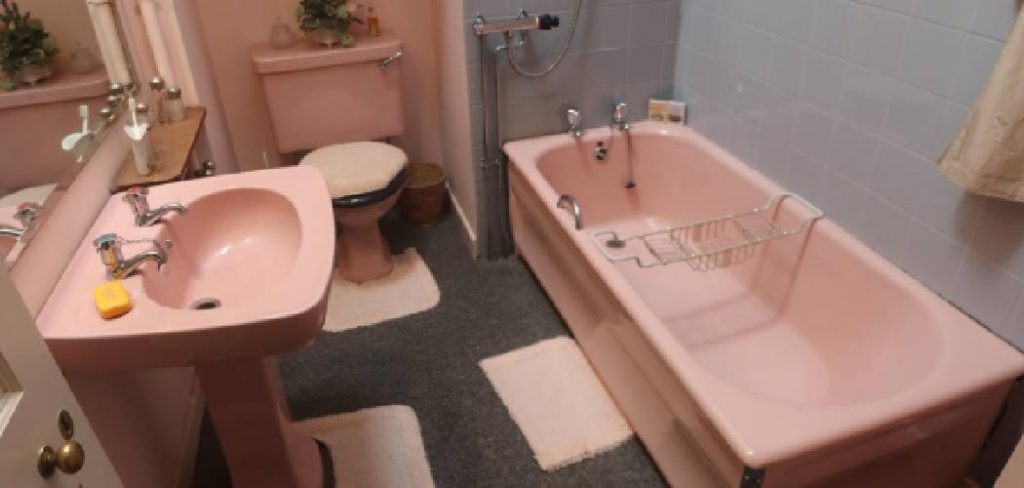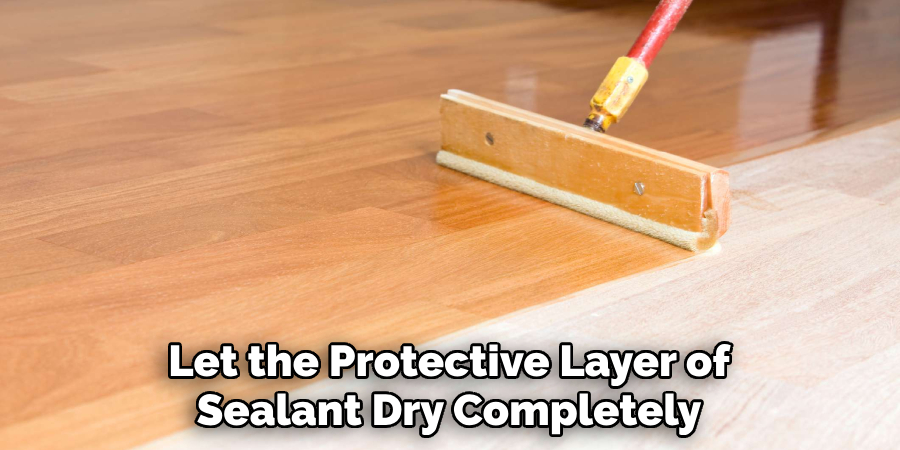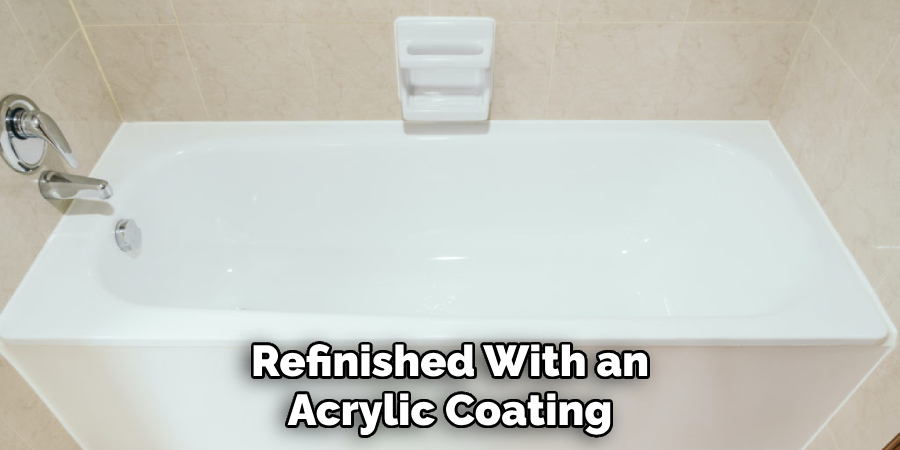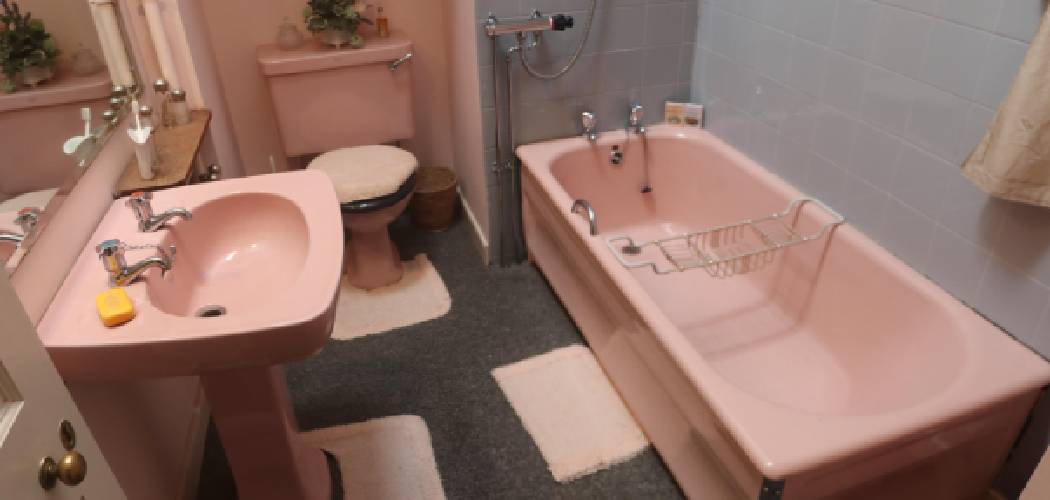Changing the color of your bathtub can be a great way to give your bathroom a fresh, new look without having to invest in costly renovations. Whether you’re looking to match your existing decor or just want something different, you can change the color of your bathtub in several ways. The following guide will help you explore the options available and find the best solution for your needs.

The advantages of changing the color of your bathtub are numerous. Firstly, painting or refinishing the surface can dramatically improve its aesthetic appeal. A new color can give your bathroom a fresh modern look and feel.
It also provides an economical way to give your bathroom an updated makeover without investing in a costly replacement tub. You can find step-by-step instructions on how to change color of bathtub in this blog article.
Step-by-step Instructions for How to Change Color of Bathtub
Step 1: Inspect the Bathtub
Before attempting to change the color of your bathtub, it is important to inspect it for any damage or cracks that might affect the paint job. Use a degreaser and scrub brush to remove dirt, grime, or soap residue from the tub’s surface. Then use sandpaper to roughen the surface and remove any imperfections.
Step 2: Apply Primer
Once you’ve prepped the tub, paint it with a primer. Make sure to give yourself plenty of time for the primer to dry before applying paint. Now that your bathtub is primed select the paint color you’d like to use. Choosing high-quality, durable paint that can withstand water and other elements is important.
Step 3: Sand and Clean Again
Before painting your bathtub, lightly sand the primer and wipe it down with a damp cloth to remove dust or debris. Once you have prepped the surface, you can paint your bathtub with an even coat of paint. Make sure to cover all sides and edges of the tub to get a consistent finish.
Step 4: Let Dry and Repeat
Let the first coat dry thoroughly before applying the second coat. Repeat this process of painting and letting it dry until you’ve achieved your desired look. To help protect your paint job, apply a clear sealant or glaze to the bathtub’s surface after the final coat has dried. This will block out moisture and dirt for longer-lasting results.
Step 5: Let Dry
Let the protective layer of sealant dry completely before using your bathtub again. You’ve successfully changed the color of your bathtub and can now enjoy its new look. Don’t forget to keep it clean and well-maintained to look great for years to come.

Tips for How to Change Color of Bathtub
- Wear protective gear like a respirator mask, gloves, and safety glasses when sanding down the surface of your bathtub to prepare for painting.
- Clean the bathtub thoroughly with a degreaser to remove any buildup from soap or mildew.
- Use high-grit sandpaper to lightly scuff the surface before priming.
- Apply a quality primer to the surface of your bathtub before painting.
- Use an oil-based paint for the best results when changing the color of your bathtub.
- Be sure to let each layer of paint dry completely before adding another coat of paint.
- Apply at least two coats of sealant after the paint has dried to ensure a lasting finish.
Follow these steps to ensure a safe and successful project when changing the color of your bathtub. With proper preparation and care, you can easily update the look of your bathroom with a fresh new coat of paint.
How Long Should the Paint Cure Before Use?
After you have finished the painting process, it is important to allow the paint to cure for at least 24 hours before using your bathtub again.
Depending on the type of material and paint being used, it may take up to a few weeks for the paint to fully cure. Do not expose the painted surface to high temperatures or steam during this time, as this can cause the paint to bubble and peel away.
If you are using an oil-based paint, it is important to allow longer curing times as the oils need adequate time to dry completely before use. For best results, follow the instructions on your specific paint can for exact curing times.
Allowing enough time for the paint to cure properly will ensure long-lasting color and finish for your tub. It is also important to avoid using harsh chemicals or abrasive cleaners on the painted surface until after the paint has fully cured. Doing so could damage the paint, ruining your bathtub’s color and finish.
How Often Does the Color Need to Be Reapplied?
The frequency of color reapplication for bathtubs depends on the type of finish used and the amount of use the tub receives.

If your tub is refinished with an acrylic coating, it should be reapplied every three to five years or whenever you notice signs of fading or discoloration. If your tub has been refinished with an epoxy-based coating, the color may only need to be reapplied every ten years or more. In any case, check with your refinishing specialist on their recommendation for the best results.
To extend the life of your bathtub’s new color, it is important to properly care for and maintain it after refinishing. This includes avoiding harsh cleaning chemicals, using a soft cloth when wiping the tub, and not using abrasive scrubbing pads or sponges. With proper care, your bathtub’s newly changed color will last many years.
What Type of Maintenance is Necessary for a Freshly Painted Bathtub?
After painting your bathtub, it’s important to maintain the new paint job properly. Here are some tips for keeping your newly painted bathtub in top condition:

- Regularly clean your tub with a nonabrasive cleaner designed on tile or porcelain surfaces. Use a soft cloth or sponge to avoid damaging the paint job.
- To prevent damage from acidic or alkaline cleaners, rinse the tub with water and a soft cloth after each use.
- For tougher stains, use an abrasive cleaner specifically designed for painted surfaces. Avoid scraping or scrubbing the surface of your tub unless necessary.
- Wipe up any spills immediately to avoid staining or damaging the paint job.
- Avoid harsh chemicals such as bleach, ammonia, and acetone on your tub, as they can cause discoloration and damage the painted surface.
- Regularly inspect the tub for chipping or peeling paint and take any necessary steps to repair it before it worsens.
Following these simple maintenance tips, you can keep your newly painted bathtub looking new for years. If you ever have any questions about maintaining the color of your tub, be sure to consult a professional painter or tile expert for advice.
How Can One Avoid Common Mistakes When Changing the Color of a Bathtub?
Several common mistakes can arise when attempting to change a bathtub’s color. It is important to remember these and take necessary precautions to avoid them.

The first mistake people make when changing the color of their bathtub is not properly preparing the surface. Preparing the surface means sanding down any rust or dirt and ensuring the surface is clean and dry. If this step is done properly, the paint will adhere to the surface, producing a more-than-satisfactory finish.
Another mistake that people need to correct when changing the color of their bathtub is not using a primer before painting it. Primer acts as an adhesive between the old and new colors, ensuring that the paint adheres properly to the surface. Without a primer, the paint is likely to flake off over time.
A third mistake people need to correct when changing the color of their bathtub is not using epoxy-based paint. Epoxy-based paints are specifically designed for use on bathroom fixtures and surfaces, making them more durable and water-resistant than other types of paint.
Conclusion
In conclusion, changing the color of your bathtub is a great way to give your bathroom an updated look and feel. You can do the job quickly with the right tools, materials, and techniques. Start by prepping the surface, cleaning away dirt or grime with a mild detergent and water solution.
Next, use sandpaper to rub the tub’s surface to create a better bond between the bathtub and the paint. Then, apply a primer and allow it to dry before painting on your chosen color. Finally, finish off with a clear coat for added protection. Reading this post has helped you learn how to change color of bathtubs. Make sure the safety precautions are carried out in the order listed.

